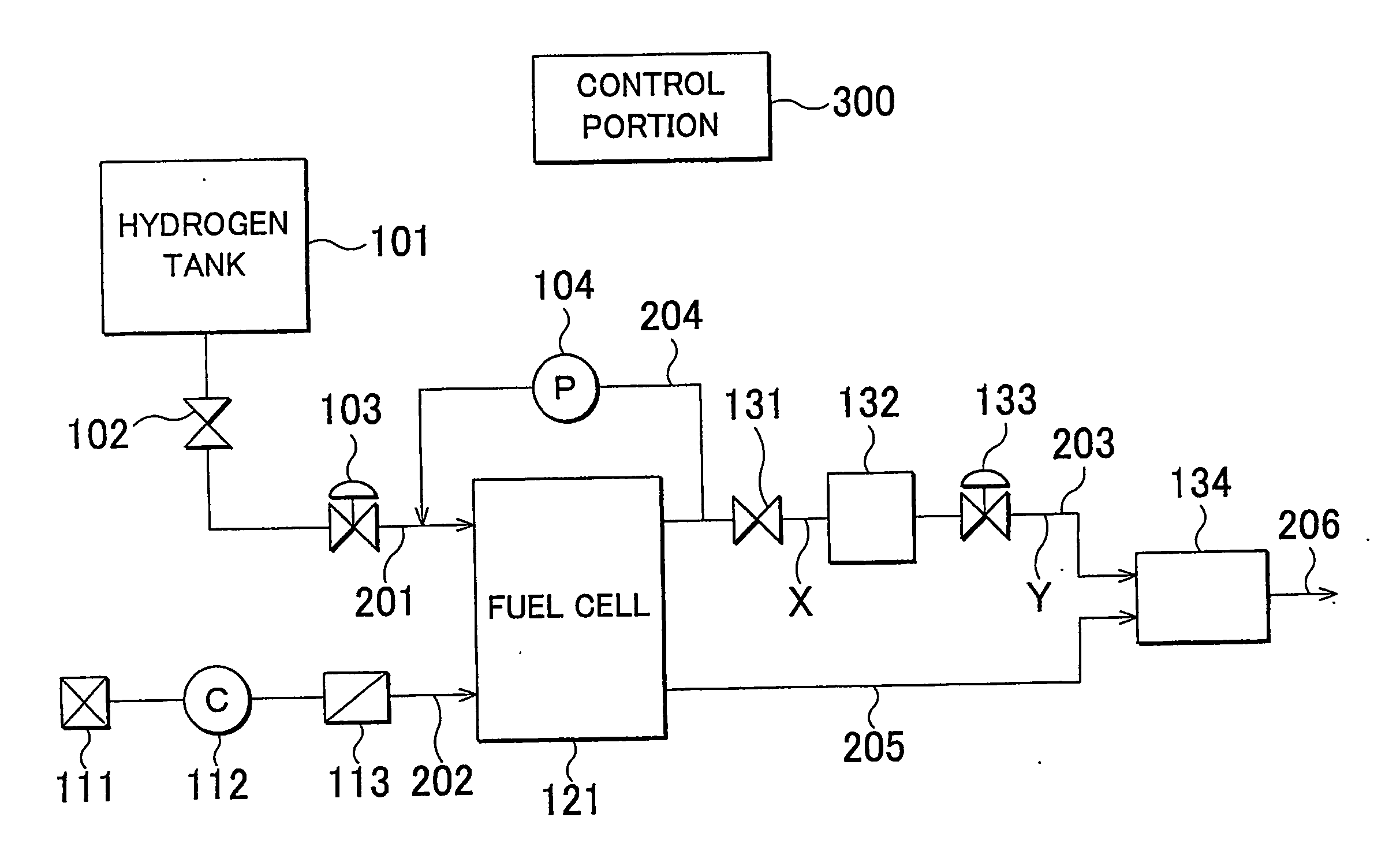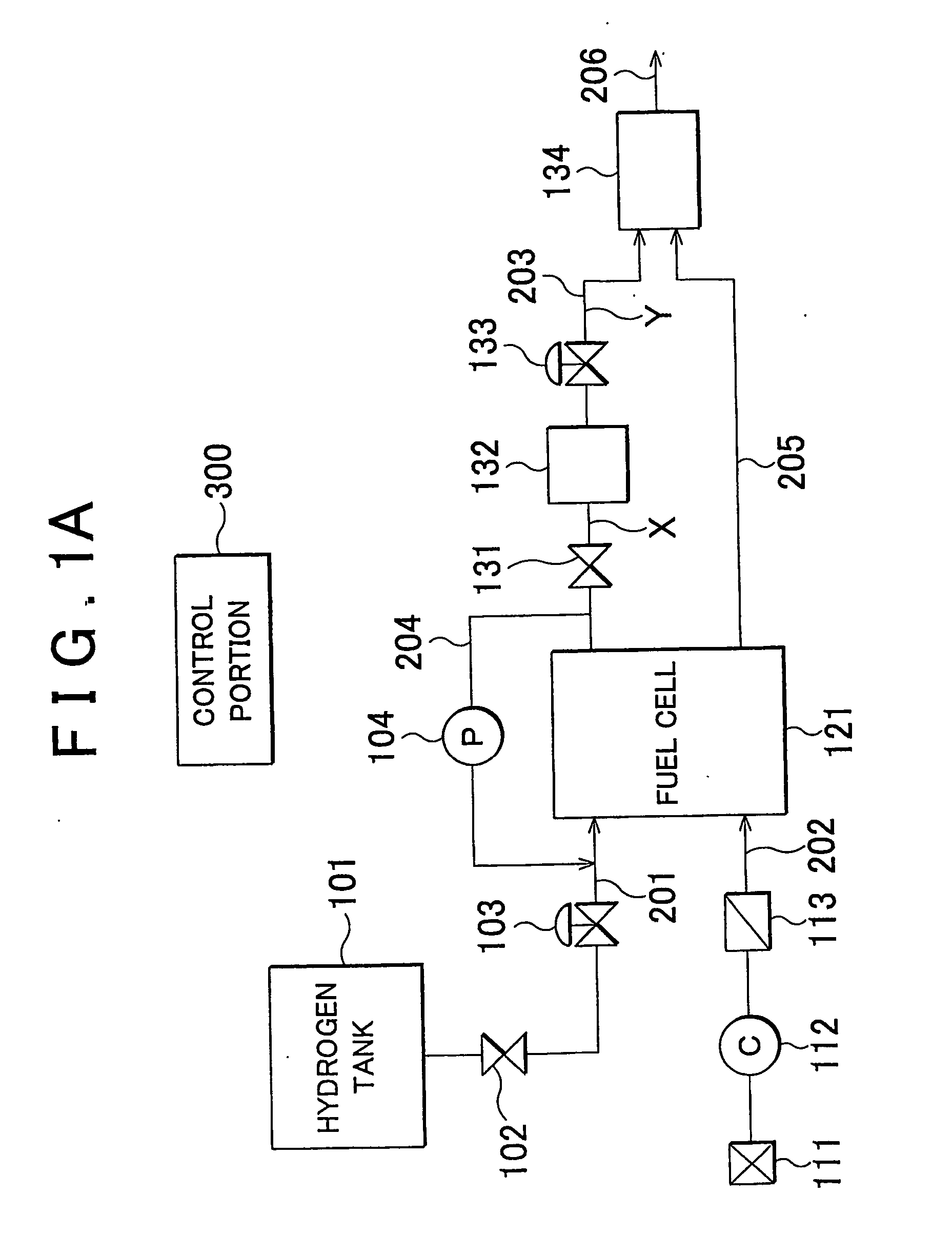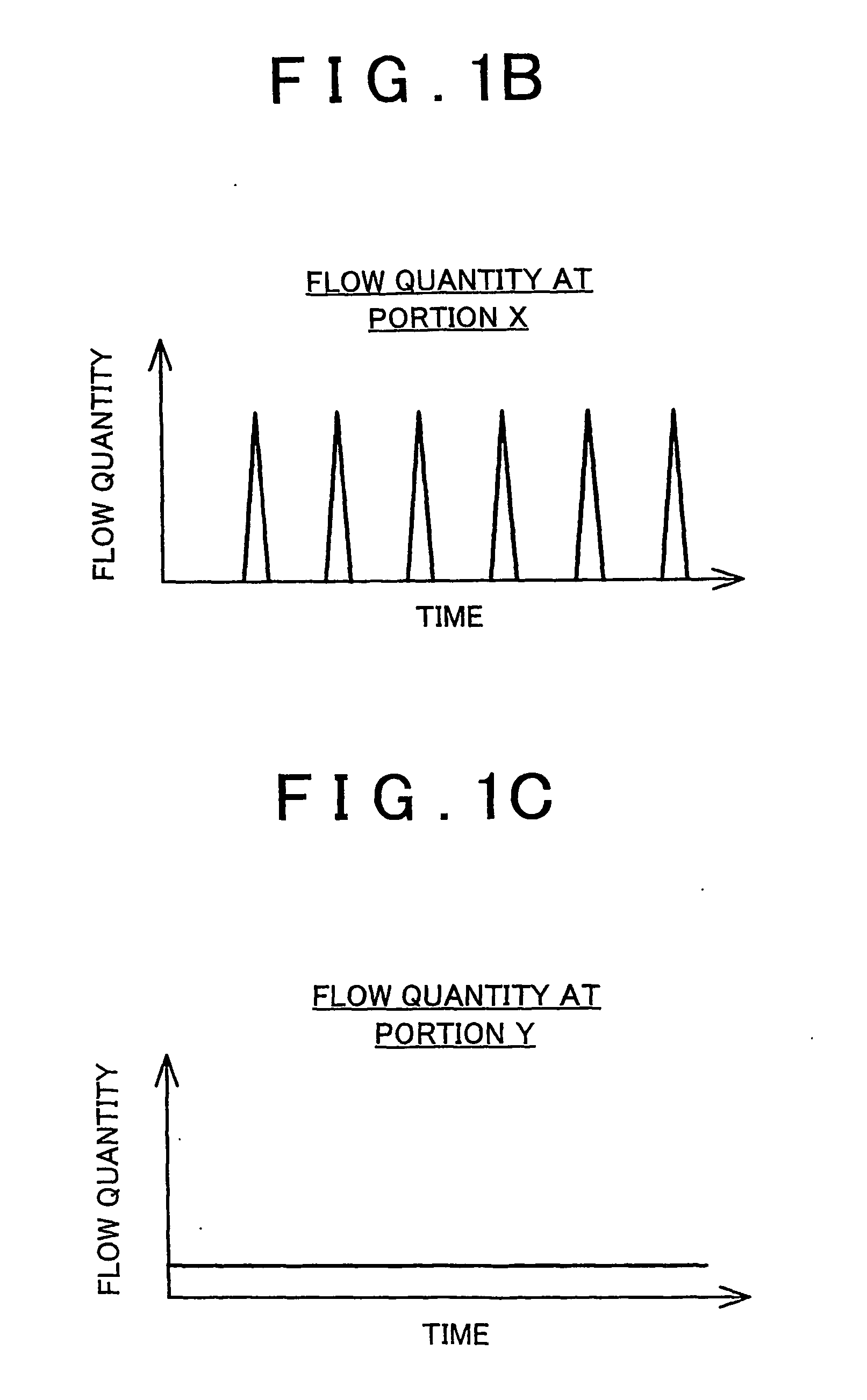Fuel cell system
a fuel cell and system technology, applied in the field of fuel cell systems, can solve the problems of increasing the cost of the combustor (catalyst), reducing the size of such a hydrogen off-gas discharge mechanism, and reducing the output of a unit cell of the fuel cell, so as to reduce the quantity of catalyst used, the effect of stable catalyst
- Summary
- Abstract
- Description
- Claims
- Application Information
AI Technical Summary
Benefits of technology
Problems solved by technology
Method used
Image
Examples
first embodiment
[0061]FIG. 1A to FIG. 1C schematically show a first embodiment of the invention. FIG. 1A shows a high-pressure hydrogen tank 101 for storing hydrogen, an opening / closing valve (shutoff valve) 102 for interrupting supply of hydrogen gas from the high-pressure hydrogen tank 101, a pressure adjusting valve 103 for adjusting the pressure (flow quantity) of the hydrogen gas supplied to a fuel cell 121, and a pump 104 for causing exhaust gas (hydrogen off-gas) containing remaining hydrogen gas that has not been used to flow back to the fuel cell 121. FIG. 1A also shows an air filter 111 for removing dust in the air, a compressor 112 for delivering air, and a humidifier 113 for humidifying air. The fuel cell 121 is, for example, a polymer electrolyte fuel cell. The fuel cell receives supply of hydrogen gas and air (oxidizing gas) to generate electric power. FIG. 1A also shows an opening / closing valve 131 for discharging the hydrogen off-gas to the outside of the fuel cell 121, a chamber 13...
third embodiment
[0074]FIG. 3 shows a third embodiment of the invention. In FIG. 3, the same portions as in FIG. 1 are denoted by the same reference numerals, and description thereof will be omitted.
[0075] In the embodiment, as the flow quantity control valve (adjusting valve) 133, an electromagnetic valve is used, and is controlled by output of the control portion 300. The other portions are the same as in the first embodiment.
[0076] In the configuration, the control portion 300 sets the opening amount of the adjusting valve 103 according to the accelerator opening amount of the vehicle so as to set the quantity of the hydrogen gas supplied to the fuel cell 121. Also, the control portion 300 sets the average value of the quantity of the hydrogen off-gas supplied to the combustor 134 from the flow quantity adjusting valve 133 according to the accelerator opening amount of the vehicle. Thus, it is possible to set the quantity of the hydrogen off-gas supplied to the combustor 134 according to the qu...
fourth embodiment
[0079]FIG. 4 shows a fourth embodiment of the invention. In FIG. 4, the same portions as in FIG. 1 are denoted by the same reference numerals, and description thereof will be omitted.
[0080] In the embodiment, a temperature sensor 136 for measuring the temperature of the catalyst in the combustor 134 is provided. Output of the temperature sensor 136 is transmitted to the control portion 300. The flow quantity control valve (adjusting valve) 133 for suppressing the pulsed change in the quantity of the hydrogen off-gas and supplying the hydrogen-off gas to the combustor 134 is constituted by an electromagnetic valve. Also, a sufficient quantity of the air off-gas is supplied to the combustor 134. The other portions are the same as in the first embodiment.
[0081] In the configuration, the control portion 300 adjusts the quantity of the hydrogen off-gas supplied from the flow quantity control valve 133 based on the output of the temperature sensor 136 such that the temperature of the ca...
PUM
| Property | Measurement | Unit |
|---|---|---|
| concentration | aaaaa | aaaaa |
| temperature | aaaaa | aaaaa |
| pressure | aaaaa | aaaaa |
Abstract
Description
Claims
Application Information
 Login to View More
Login to View More - R&D
- Intellectual Property
- Life Sciences
- Materials
- Tech Scout
- Unparalleled Data Quality
- Higher Quality Content
- 60% Fewer Hallucinations
Browse by: Latest US Patents, China's latest patents, Technical Efficacy Thesaurus, Application Domain, Technology Topic, Popular Technical Reports.
© 2025 PatSnap. All rights reserved.Legal|Privacy policy|Modern Slavery Act Transparency Statement|Sitemap|About US| Contact US: help@patsnap.com



